STUDENT RESOURCE PAGE
OL 332: Water Conservation & Management.
This OL 332 Student Resource Page has three sections that can easily be reached by clicking on the red links just below.
Read the Class Homepage First.
- Download Documents. This is where you can download Word, Excel and PDF documents that can save as course resources for future projects and use as templates for the assignments.
- The Course Website. Webpage versions of the discussions and assignments for each week.
- Read this first: The Class Home Page. This gives you an overview of the course and also sets up the course logistics.
Download Course Documents
OL 332: Climate Smart Agriculture
General Documents
Course Participant List
Week One
OL 332 Assignment One Homework PDF 35K
OL 332 Assignment One Discussion PDF 35K
Magee Example Project OL 332 Assignment 1 Word Document to 35K
Field Guide: Knowledge Transfer—Developing Field Guides, Lesson Plans, and Workshops
Field Guide: Participatory Capacity and Vulnerability Assessment
Workshop Lesson Plan Template: Participatory Capacity and Vulnerability Assessment
How to Card: Participatory Capacity and Vulnerability Assessment
CARE. Climate Vulnerability and Capacity Analysis Handbook. CARE.
IFAD. Good Practices in Participatory Mapping, IFAD.
IIED. Participatory Learning and Action 54: Mapping for change: practice, technologies and communication, IIED.
Week Two
OL 332 Assignment Two Homework PDF 35K
OL 332 Assignment Two Discussion PDF 35K
Magee Example Project OL 332 Assignment 2 Word Document 35K
Week Three
OL 332 Assignment Three Homework PDF 35K
OL 332 Assignment Three Discussion PDF 35K
Magee Example Project OL 332 Assignment 3 Word Document 35K
OL 332 Lesson Plan – Forming a Community Water Conservation and Management Committee
Week Four
OL 332 Assignment Four Homework PDF 35K
OL 332 Assignment 4 Discussion PDF 35K
Magee Example Project OL 332 Assignment 4 Word Document 35K
Field Guide & Lesson Plan A4: Developing a Water Conservation & Management Plan
Week Five
OL 332 Assignment Five Homework PDF 35K
OL 332 Assignment Five Discussion PDF 35K
Magee Example Project OL 332 Assignment 5 Word Document 35K
Erik Nissen-Petersen: Water from Small Dams
Week Six
OL 332 Assignment Six Homework PDF 35K
OL 332 Assignment Six Discussion PDF 35K
Magee Example Project OL 332 Assignment 6 Word Document 36K
Field Guide and Lesson Plan A6 Introduction Developing a Water Use Management Plan
How To Card A6 Developing a Water Conservation & Management Plan
Week Seven
OL 332 Assignment Seven Homework PDF 35K
OL 332 Assignment Seven Discussion PDF 35K
Magee Example Project OL 332 Assignment 7 Word Document 36K
OL 332 A7 Field Guide, How To Card, Lesson Plan – Household Rooftop Rainwater Harvesting
Field Guide: Knowledge Transfer — Developing Field Guides, Lesson Plans, and Workshops
Week Eight
OL 332 Assignment Eight Homework PDF 35K
OL 332 Assignment Eight Discussion PDF 35K
Magee Example Project OL 332 Assignment 8 Word Document 36K
Webpages with Weekly Course Discussions and Assignments
OL 332 Class Home Page
Welcome to Online Learning: OL 332 Community Level Water Conservation and Management
The Course
Welcome to the Center for Sustainable Development’s online learning course OL 332 Community Level Water Conservation and Management. In this course you will assess highly specific challenges that your communities face related to water challenges. In this course we will not be trying to change your original project — but simply zeroing in on a more specific definition of the challenge.
We will then begin researching solutions for the challenge which are perhaps also more specifically defined then your original activities in your outline. We will conclude the course with a your a capacity building workshop using one of these your more highly refined activities to address one of your communities challenges.
Logistics
Be sure to read E-Mail and Homework Etiquette
You have signed up for a specific course within specific dates. If you are not able to complete the course within these dates, the Center allows you to take the course again for 50% of the normal course fee if you enroll in the very next scheduled course and use the very same project. Unfortunately, we can’t make exceptions.
Please feel free to review E-Mail and Homework Etiquette in the Download Class Documents as a refresher. Course participants who successfully complete a course on time will receive a course certificate. Learn the full details.
OL 332 Course Syllabus
| Week 1. | Local Context |
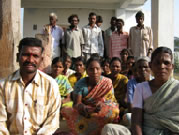 |
|
| Week 2. | |
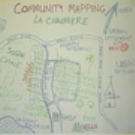 |
|
| Week 3. | Water Resources Management |
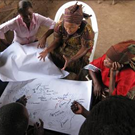 |
Setting up a Water Management Committee developing a Water Management plan. In week 8 of OL 343 you set up a community based water management committee. You can use the same technique to set up a Community Based Water Management Subcommittee. The committee will be in charge of developing a Water Management plan. Setting up a subcommittee is a much more rapid process than setting up a full committee. |
| Week 4. | Design Techniques: Environmental Restoration |
 |
|
| Week 5. | Design Techniques: Water Harvesting. What is water harvesting? |
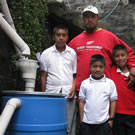 |
|
| Week 6. | Planning for Conservation |
 |
|
| Week 7. | Workshop Planning |
 |
|
| Week 8. | Capacity Building |
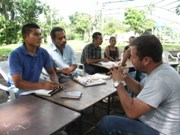 |
|
So what’s next? Click on the Assignment One Discussion and get started in climate smart agriculture!
I hope you enjoy the course — I’m very much looking forward to working with you.
Sincerely,
Tim Magee
